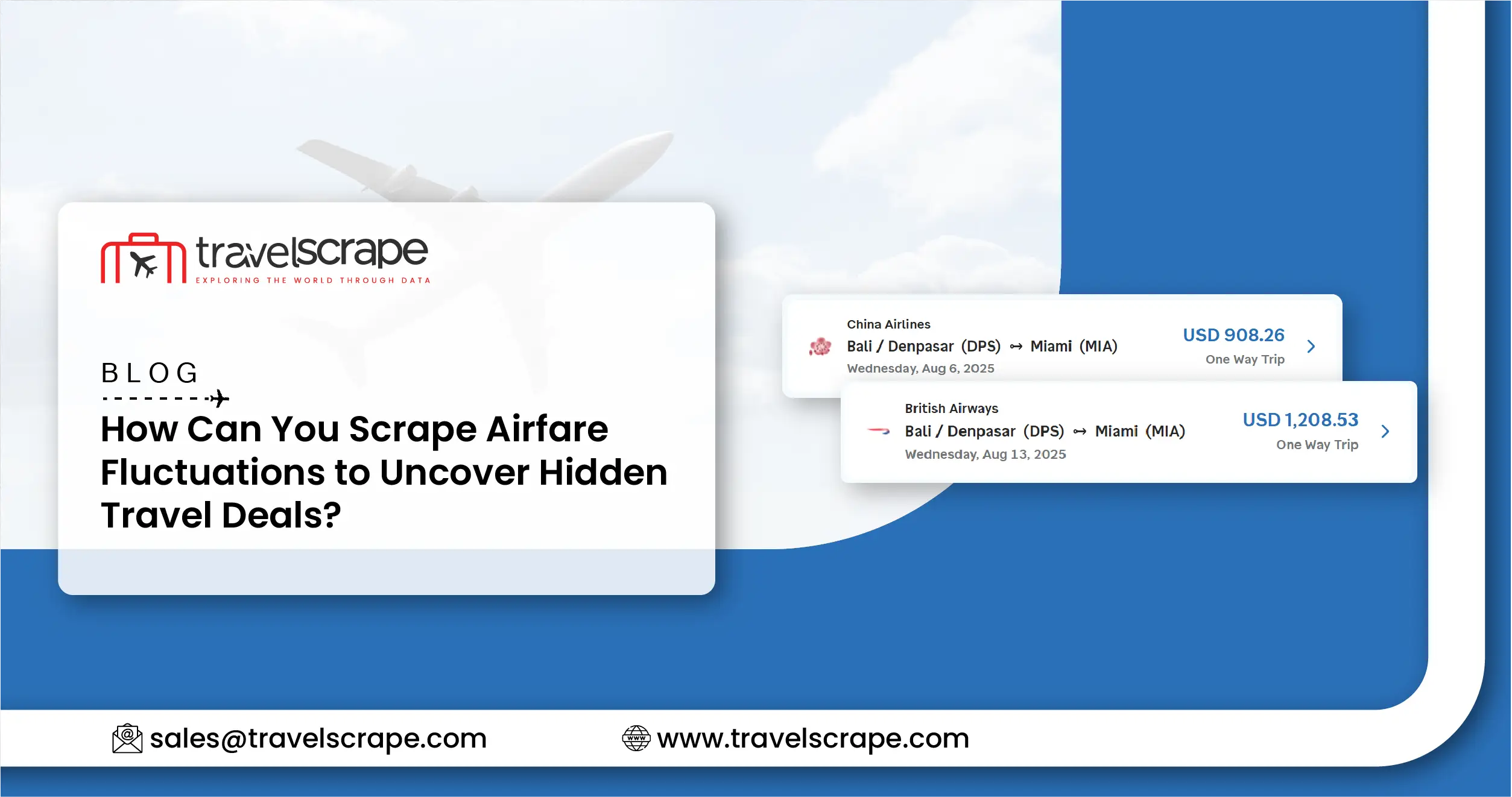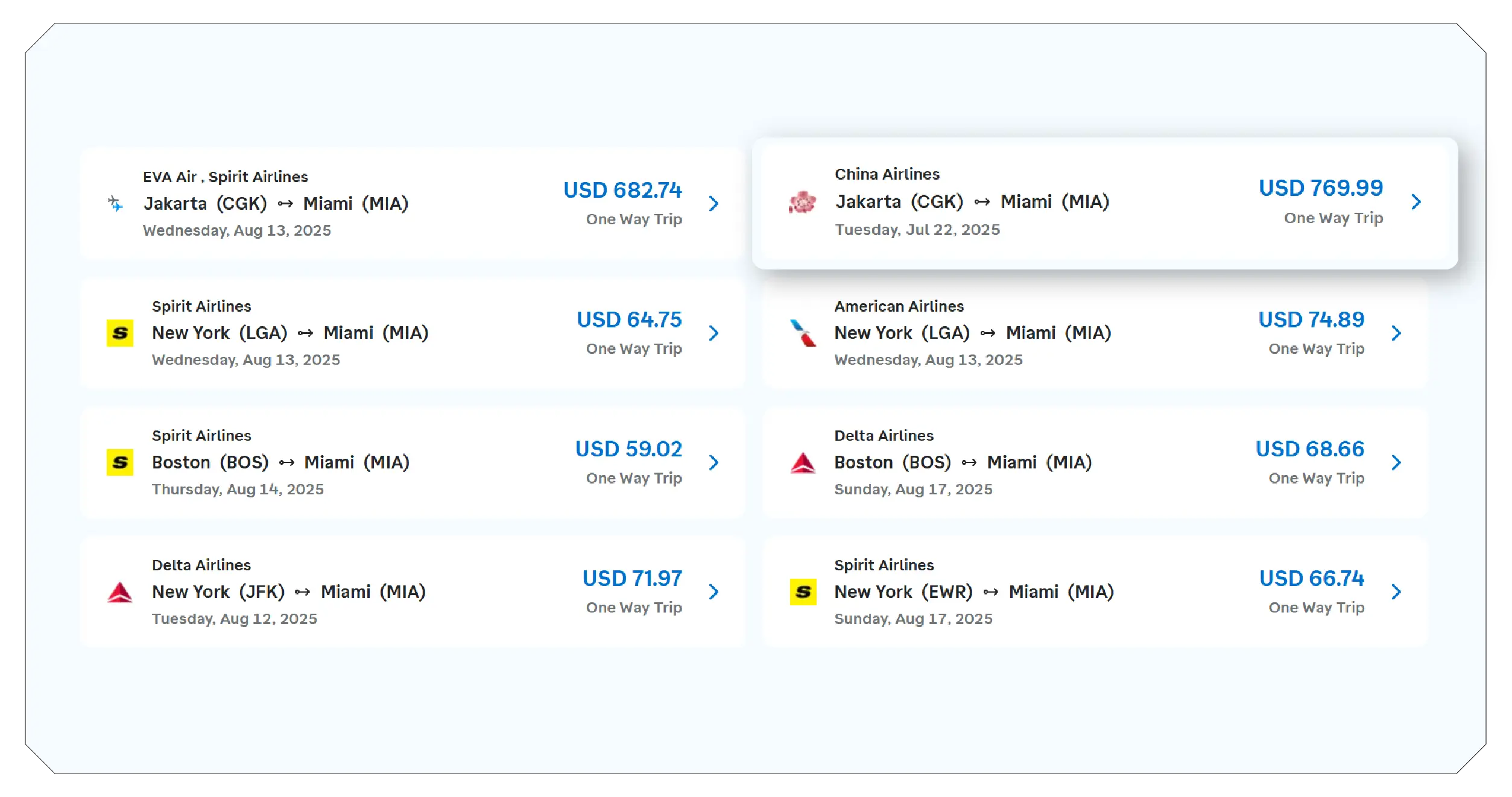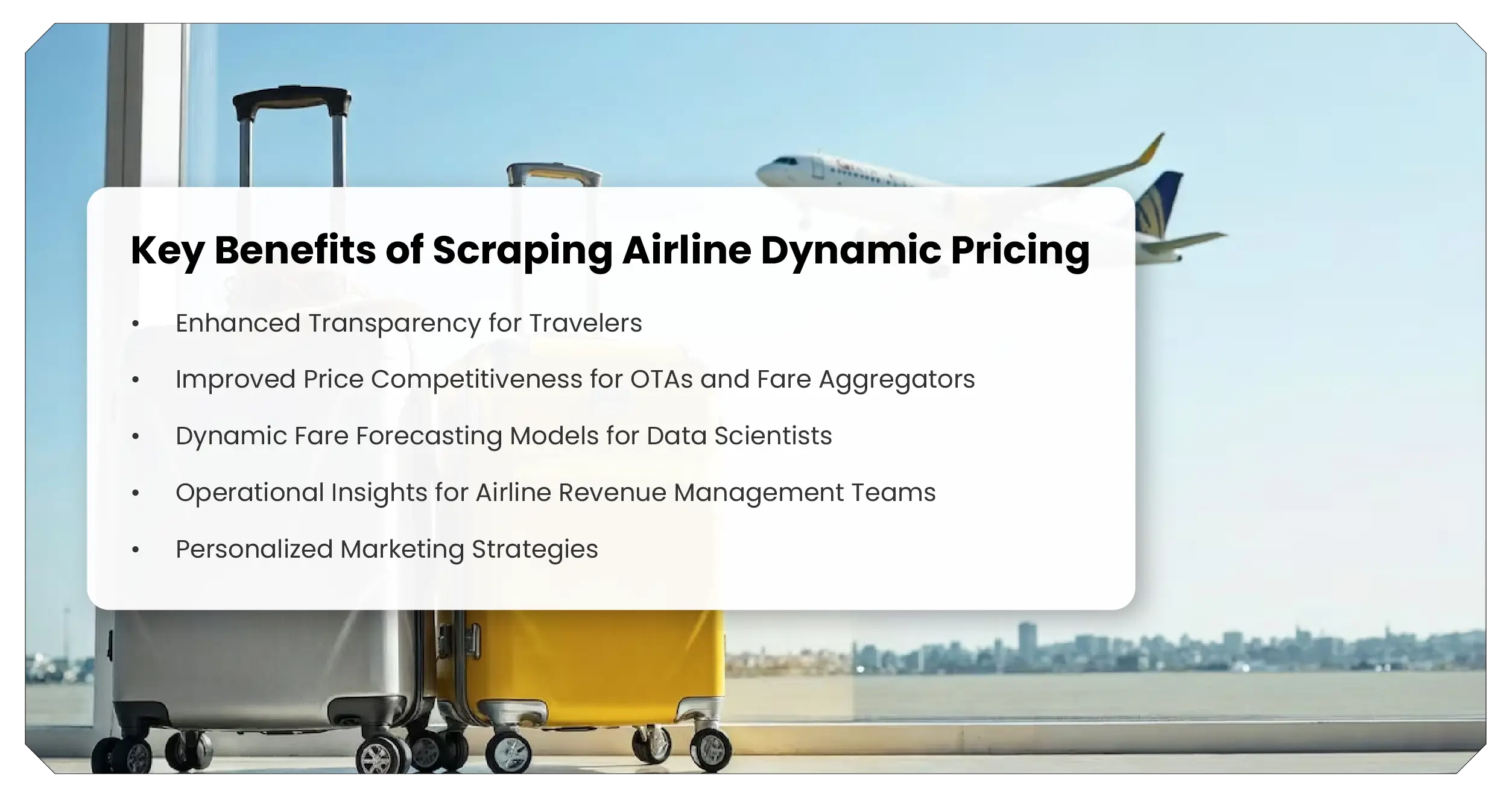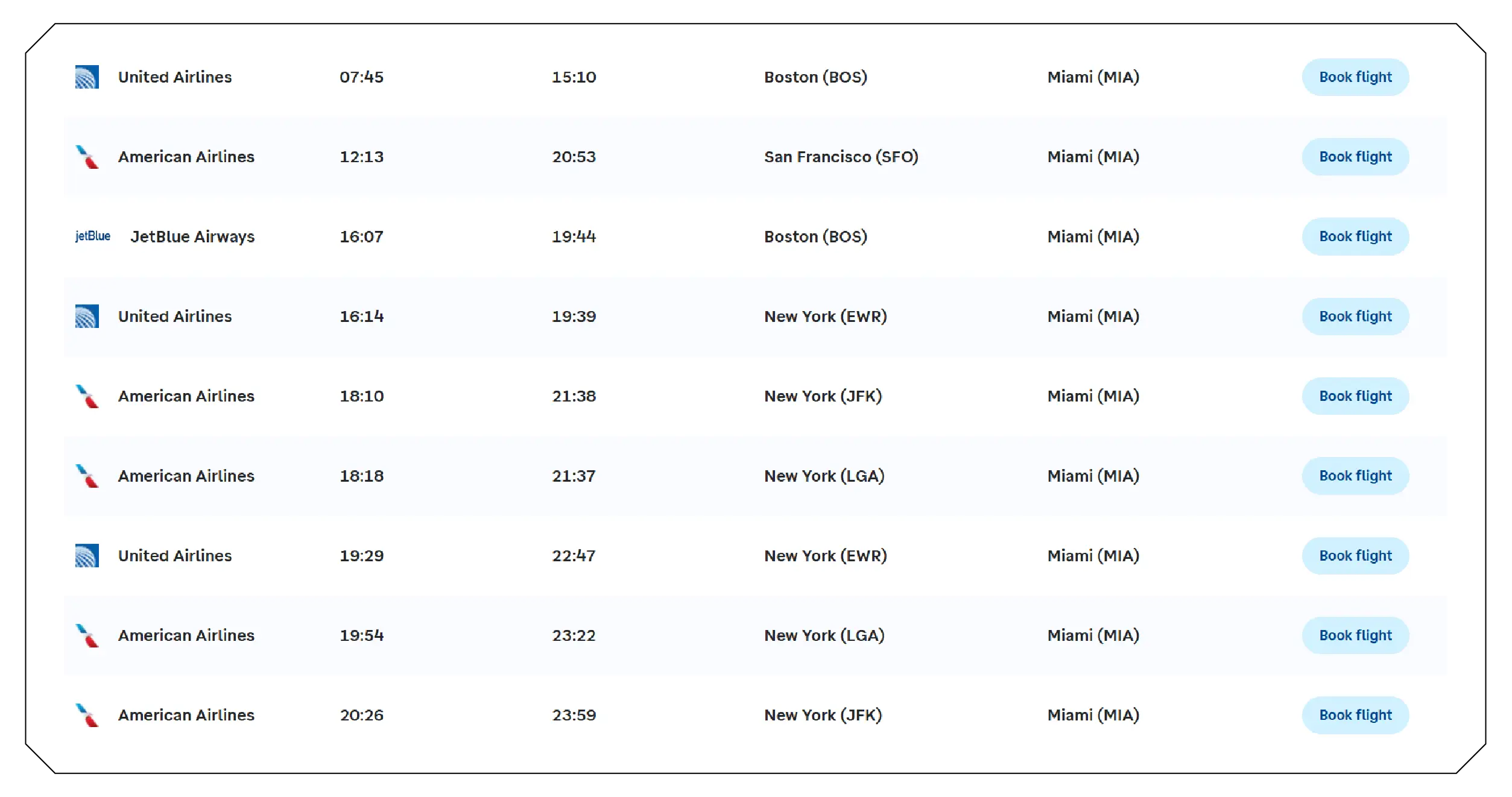How Can You Scrape Airfare Fluctuations to Uncover Hidden Travel Deals?

Introduction
In today's fast-paced travel market, airline dynamic pricing plays a crucial role in determining how airfare is set. Airlines—from low-cost carriers to international giants—utilize sophisticated algorithms to dynamically adjust ticket prices in real-time based on factors such as demand, seasonality, booking patterns, and even browsing behavior. For travel startups, market analysts, and fare comparison engines, knowing how airlines set prices is essential to staying ahead of competitors and delivering value to users.
To unlock these insights, organizations are increasingly adopting tools to scrape airfare fluctuations across various booking platforms. These scraping solutions provide access to granular, up-to-date fare data across routes, enabling businesses to understand pricing trends, identify peak seasons, and optimize their offers. Leveraging this data enables companies to create real-time pricing insights, power AI-based predictions, and deliver personalized travel experiences. It also builds transparency in fare comparisons, offering customers better deals and driving smarter pricing strategies across the travel ecosystem.
Why Are Airline Prices Always Changing?

Understanding Airlines Data Scraping starts by recognizing that ticket prices are not fixed. Airlines rely on dynamic pricing strategies that factor in:
- Historical purchase data
- Remaining seat availability
- Booking window (how far in advance the flight is)
- Competitor pricing
- Seasonal demand spikes
This is where Flight Price Data Intelligence plays a crucial role. By capturing pricing data at scale and across time intervals, companies can reverse-engineer how those pricing algorithms respond to market forces.
The Power of Real-Time Flight Price Monitoring
For travelers and platforms alike, Real-Time Flight Price Monitoring opens up the ability to make timely decisions. For example, travel companies can alert users to sudden price drops or understand when airlines are about to increase fares. Airline fares that are updated consistently can help businesses detect patterns and build predictive models.
Some pricing shifts may happen dozens of times per day for a single route. The only way to keep up is by using a system that can automate data capture—this is where a robust Travel Scraping API comes in.
Key Benefits of Scraping Airline Dynamic Pricing

Building your own Web Scraping for Flight Data solution offers significant strategic advantages for businesses and developers operating in the travel industry. Here's a detailed look at how such a custom scraper can deliver real value:
- Enhanced Transparency for Travelers: By capturing and displaying historical fare data through visualizations, such as price trend graphs, travel platforms can give users more confidence in their booking decisions. When consumers see how prices fluctuate over time, they are more likely to trust the platform and book directly through it. This transparency not only improves user satisfaction but also builds long-term brand loyalty.
- Improved Price Competitiveness for OTAs and Fare Aggregators: Online Travel Agencies (OTAs) and airfare comparison platforms can gain a significant edge by using real-time data to monitor competitors' prices. By scraping flight data across airlines and regions, they can instantly adjust their own pricing or alert users to the best deals, maintaining a competitive advantage in a rapidly shifting market.
- Dynamic Fare Forecasting Models for Data Scientists: A custom flight data scraping system enables data scientists to collect vast datasets of airfare changes over time, across routes, and among carriers. This data becomes the foundation for developing powerful forecasting models that can predict future fare trends, identify pricing anomalies, and support dynamic booking engines. These models can be tailored to specific markets or consumer behaviors.
- Operational Insights for Airline Revenue Management Teams: Airlines and large travel platforms can use scraped pricing data to benchmark their fares against those of competitors. By understanding pricing patterns and seasonal trends, revenue managers can make more informed decisions about when to adjust prices, launch promotions, or adjust seat inventory. These operational insights can significantly boost profitability and resource allocation.
- Personalized Marketing Strategies: Flight price scraping can be combined with user interaction data to create tailored marketing campaigns. For instance, if a user frequently searches for a particular route and prices are dropping, a personalized alert or discount offer can be triggered. This data-driven targeting increases engagement and conversions while also optimizing marketing spend. It also helps identify patterns of flight price discrimination, allowing marketers to adjust messaging and pricing for different user segments more ethically and effectively.
By integrating these benefits into their broader pricing and marketing ecosystems, travel platforms can not only keep pace with the rapidly changing airline market but also avoid common pitfalls, such as pricing delays, missed opportunities, or customer dissatisfaction. A robust Web Scraping for Flight Data solution turns raw pricing information into actionable business intelligence.
How to Extract and Use Pricing Patterns?
To break into these dynamic pricing structures, developers and analysts often extract airfare algorithm patterns across multiple routes and booking classes. It enables teams to understand the logic behind surge pricing and identify manipulative pricing strategies. Understanding dynamic pricing in travel is especially useful when building data-driven tools that automatically notify or recommend alternate routes.
For example, during peak holiday seasons, most airlines activate surge pricing models. Tracking these changes daily gives a clear view of what drives increases in passenger search volume, bookings, or time decay. This data can even reveal how pricing differs for users on desktops versus mobile devices, or by IP geolocation.
Using AI for Airline Pricing Analysis
The rise of machine learning brings a new frontier: AI vs human travel pricing. AI models can now predict future pricing with surprising accuracy, making it easier to decide when to buy or sell airline tickets. However, to feed such models, you need large amounts of clean, timely, and structured flight fare data.
The availability of flight data tracking tools means you can now create dashboards that show:
- Hourly fare movement
- Cheapest days to travel
- Competitor routes and offers
- Price elasticity curves
This is especially important in understanding airline price manipulation, where fares are nudged up based on user interaction or limited availability messaging.
Revenue Management and Airline Business Models
To compete in the pricing race, travel businesses must also scrape airline revenue models. These include ancillary services such as baggage fees, seat selection, in-flight services, and bundled options. Capturing this data helps platforms recommend total cost comparisons rather than just base fares.
Another crucial component is tracking dynamic fare adjustment data. Airlines often test prices in specific markets before rolling them out globally. If your scraper can capture these test cases, you get a strategic advantage in understanding airline pricing behavior.
Compliance, Ethics, and Best Practices
While scraping is a powerful method, it's essential to be responsible. Follow robots.txt policies where applicable, use rate-limiting techniques, and avoid overloading the airline's infrastructure to ensure optimal performance. Many sites have public APIs or pricing feeds you can explore before deploying scrapers.
You can also create models to predict peak changes without scraping in real time by training them on historical fare datasets.
Future of Airline Pricing Intelligence

With the advancement of AI, the next generation of pricing tools will incorporate behavioral tracking, predictive modeling, and automated purchasing. However, it all begins with structured, high-volume, and real-time datasets, only possible with sophisticated scraping systems.
Use Case: How We Helped a Travel Platform Optimize Fare Alerts
One client wanted to create fare alerts for international flights. By deploying our scrapers, they were able to:
- Track over 600 routes daily
- Identify sweet spots for fare drops
- Automate price alert emails
- Reduce customer churn by 30%
- Grow average session time by 50%
This case showcases how intelligent data capture directly leads to improved user experience and stronger market positioning.
How Travel Scrape Can Help You?
-
Custom Flight Data Scraper Development
We build robust and scalable scrapers tailored to specific routes, dates, airlines, or regions to collect accurate and efficient real-time airfare data. -
Real-Time Price Monitoring Solutions
Our tools track and log fare fluctuations to provide continuous real-time pricing insights and historical data comparisons. -
Integration with Travel Pricing Engines
We integrate scraped data with your travel pricing engine or BI tools to support dynamic pricing models and analytics. -
Dataset Delivery in Preferred Formats
Whether it's JSON, CSV, or APIs, we deliver a clean, structured dataset: airline fares customized to your business needs. -
Compliance and Anti-Blocking Measures
We implement smart rotation, CAPTCHA solving, and anti-blocking techniques to ensure uninterrupted web scraping for flight data.
Final Thoughts
Creating your airline pricing intelligence tool offers a significant strategic advantage. By continuously monitoring pricing changes across different routes, time zones, and airline segments, businesses gain actionable insights into fare dynamics. A reliable scraping system helps uncover patterns in consumer behavior, demand-driven adjustments, and competitor strategies.
In conclusion, using advanced techniques such as web scraping airline logic or opting to extract flight offer metadata allows travel companies, analysts, and researchers to decode complex pricing systems. These tools not only improve pricing accuracy but also enhance the ability to deliver competitive, transparent, and personalized offerings. Building a travel pricing engine further strengthens your ability to model trends and forecast pricing with precision in an ever-changing market.
Ready to elevate your travel business with cutting-edge data insights? Get in touch with Travel Scrape today to explore how our end-to-end data solutions can uncover new revenue streams, enhance your offerings, and strengthen your competitive edge in the travel market.